Extraction from the book: Programmed To Kill: The Politics of Serial Murder by author David McGowan
''Magic is the envelopment and coercion of the objective world by the ego; it is a dynamic subjectivism. Religion is the coercion of the ego by gods and spirits who are objectively conceived beings in control of nature and man.''
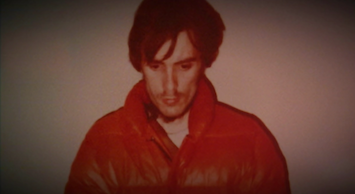
Chase was born into a household where inter-familial violence was the order of the day. His parents reportedly fought constantly, and his father was euphemistically described as a “strict disciplinarian.” By the age of eighteen, Richard was receiving regular psychiatric care. In the late 1960s, Chase was twice arrested for possession of marijuana, the same charge that first brought Herb Mullin into the orbit of the criminal justice system. Richard was also a suspect in a 1968 shooting, although he was never charged with the crime. In 1973, he was arrested for carrying a concealed weapon and, on December 1, he was admitted into the American River Hospital by order of the court, but was discharged not long after into the care of his mother. As Herb had done with his father, Richard took to accusing his mother of controlling his mind. Chase also began claiming in the mid-70s that he was receiving telepathic messages. He was known to hold conversations with people nobody else could see. And like Mullin, Chase reportedly had a healthy appetite for hallucinogenic drugs. His mother later claimed that her son’s problems were due to him being the victim of LSD abuse.
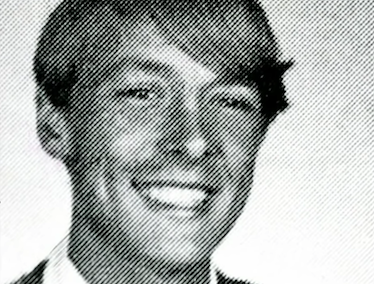
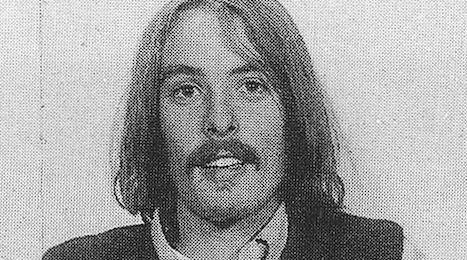
Richard was again arrested in 1976 and, on April 28, just two days shy of Walpurgisnacht, was again admitted to American River Hospital. In June of that same year, his mother was granted a one-year conservatorship of the troubled young man. He was then transferred to Beverly Manor, where he became known to staff and fellow inmates as “Dracula.” In September 1976, he was released. In June or July of the following year, Richard Chase made a very odd solo journey to Washington, D.C., for reasons unknown. He never explained to anyone, before or after the trip, the reason for his abrupt and unexpected sojourn. Immediately after that, on August 3, 1977, Chase was arrested at California’s Pyramid Lake.
Two loaded and bloodstained rifles were on the seat of his truck, along with Richard’s bloodstained clothes and shoes. Also in the vehicle was a large bucket of blood in which was floating a fresh liver (later claimed to be from a cow). Chase—naked, dripping with fresh blood, and with dried blood caked in his hair, whiskers and ears—fled from the officers upon their approach. He was apprehended, arrested and charged with federal gun law violations. In a rather unlikely turn of events, all the charges were subsequently dropped.
Less than five months later, Chase’s alleged killing spree began, just after he purchased a .22 semi-automatic handgun in early December 1977—just as Mullin had done in December 1972. On December 29, an engineer with the Federal Bureau of Land Management was picked off by a sniper in a car wielding a .22 caliber weapon—precisely mirroring one of the crimes attributed to Mullin.
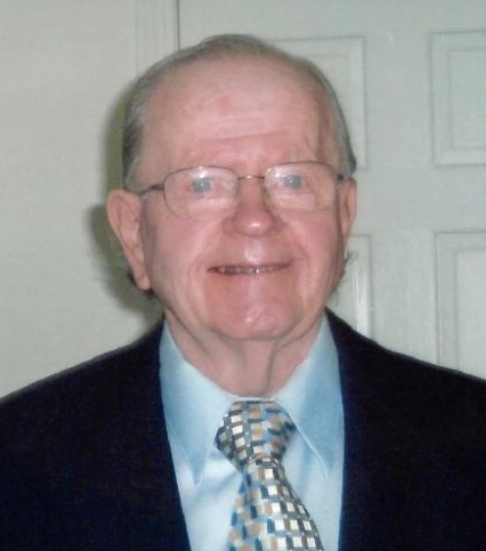

Not quite a month after that, Teresa Wallin was killed with two contact wounds to the head from a .22, one pumped into her left temple. The slugs recovered from her head were said to be “similar” to the one that killed engineer Ambrose Griffin—which is not saying much, since any .22 slug would be similar to the one that killed Griffin.
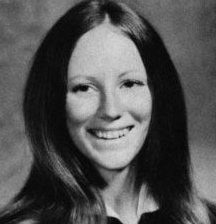

Teresa Wallin was carved up and left on display. She was ripped open from her neck to her groin, with her sternum and breastplate split open. Some of her organs were removed and her left nipple was sliced off. She was then posed in the master bedroom on her back, with her splayed legs facing the hallway. Her corpse was found to contain a three-month-old fetus.
Just four days later, in a scene reminiscent of the Ohta house after John Frazier’s alleged visit, or the Francis home after Mullin’s alleged visit, Evelyn Miroth was found dead in her home, the victim of a .22 round fired above her left ear at very close range.
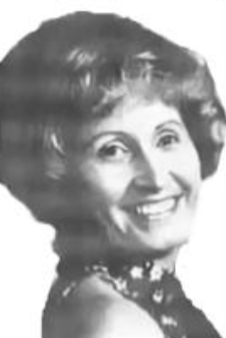
A man described as a friend, Danny Meredith, caught two slugs to the head, one between the eyes and another next to his left ear. Young Jason Miroth, Evelyn’s son, was shot above the left ear and in the back of the head. Missing from the home was twenty-two- month-old David Ferreira, Evelyn’s nephew. He was also shot in the head, though his body was not discovered until much later.
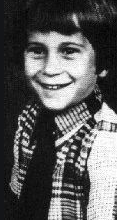
Evelyn Miroth was also brutally mutilated after her death, as was young David Ferreira. Miroth was found nude, ripped open and with her legs splayed. Two household knives lay near her body. Her right eye had been partially removed and there were multiple cuts and stab wounds about her neck. She had been split down the middle, with a second cut across her abdomen intersecting the first gaping wound, thereby forming an inverted cross on her corpse—as was the case also with Mullin’s alleged ‘ripper’ victim, whose body was discarded nearly along- side of one of Kemper’s alleged victims. Another cut ran up the back of Evelyn Miroth’s buttocks; tests revealed that semen was present in the wound. This semen was never matched to that of her alleged killer. The bathroom of the home was a gruesome sight, with blood all over the floor and bloody water left standing in the bathtub, indicating that Miroth was probably butchered there before being posed elsewhere.
Mirroring the situation five years earlier in Santa Cruz, the homicide rate in Sacramento soared during Chase’s alleged murder spree. In the twenty-nine days between his first and last killings, no fewer than fourteen largely unexplained murders plagued the capital city. Included among the dead were a baby girl killed by her father and a baby boy killed by his mother. Both of these infanticidal parents drew three-year sentences, illustrating once again the appalling job done by the criminal ‘justice’ system in protecting the most vulnerable of Americans.
On January 28, just one day after the Miroth bloodbath, Richard Chase was arrested by a three-man team of detectives that had been working the case. Despite the fact that these were arguably the most sensational crimes in the city’s history, the three were all rookies whose combined experience working homicide cases totaled just six months. It seemed almost as though the police, rather than turn the case over to its most seasoned homicide detectives, had opted to bring in a team of newcomers to handle the investigation.
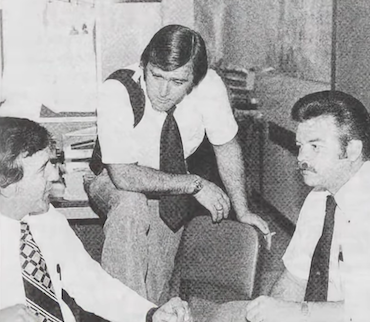
At the time of his arrest, Chase believed that he was under investigation not for murder, but for killing dogs, which he apparently was in the habit of doing. The detectives quickly made clear that Richard was being charged with multiple counts of murder, which he repeatedly denied knowing anything about. He readily admitted though to killing the dogs, whose blood covered virtually everything in his apartment, including his handwritten notebook that reportedly featured drawings of swastikas. Chase was grilled relentlessly by detectives, who showed him photographs and filled him in on the details of the crimes they claimed he was guilty of committing. Steadfastly though, Chase maintained his innocence, at one point saying: “I just...I don’t know. I don’t understand how it could be me.”
Eventually two other detectives took over the questioning of Chase, showing him yet more graphic crime scene photos and hurling yet more accusations at him. Nevertheless, Richard continued to steadfastly deny any involvement in the murders and the detectives ultimately gave up and sent him to a cell. Once there, amazingly enough, Chase promptly confessed the murders to a trustee inmate. That is, at any rate, the way the official story reads. To say that the case against Chase was weak would be a serious understatement. No forensics evidence placed him at, or even anywhere near any of the crime scenes: not one drop of blood, not one strand of hair, not a single fingerprint. No witnesses could place him at any of the scenes and no ballistics evidence linked him to any of the killings. The only evidence recovered at the Wallin crime scene consisted of latex glove prints and fresh shoe-prints on the kitchen floor. The latter, oddly enough, were not noticed until hours after technicians began searching the home, and hours after investigators had been freely trampling over the alleged evidence. One detail of the crime scene strongly indicated that the killer was not Chase, but rather someone known to Teresa: her ever-vigilant German Shepherd, Brutus, was in the house at the time of the killing.
Two sisters of David Wallin—Teresa’s husband, who discovered the body— suspected one of David’s former significant others, who claimed to possess psychic powers and who had bragged to the two women that she was in a “devil cult.” One such cult that was active in the area, strangely enough, was the Manson Family, who had relocated to the area to be near their leader’s new home in a California prison cell. Indeed, the Family’s Lynette “Squeaky” Fromme had been arrested just two years before, in 1975, in the city’s Capital Park following a failed assassination attempt on then-President Gerald Ford. At the Miroth crime scene, all that was left behind by the killer was again shoe-prints, this time in the outside soil, and latex glove prints. A cigarette butt that may or may not have been left by an assailant was found on the porch. There is no indication that saliva on that butt was ever matched to Chase.
Richard’s car was apparently parked nearby, adjacent to the Country Club Centre, a fact that prosecutors pointed to as an indication of guilt. If so, Chase had parked the car rather inappropriately for use as an intended getaway car: it was quite conspicuously parked in a clearly marked no-parking zone.
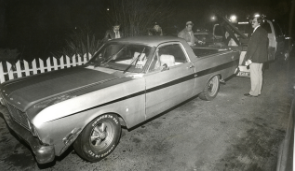
And oddly enough, the car was not actually used; the Meredith car was driven away from the home by the killer(s). It appeared as though Chase’s car had been deliberately left, by someone, in such a way that it would not fail to be noticed, and in a location that would establish Richard’s presence near the crime. There is a distinct possibility that whoever killed the inhabitants of the Miroth home arrived in the Meredith car as well as leaving in it, which would mean that the killer almost certainly knew the victims.
Neighbors across the street, who were keeping a fairly close eye on the house, saw no one enter or leave the Miroth home, saw no other cars arrive, and neither saw nor heard any signs of a struggle.
Perhaps the clearest indication that Chase did not act alone in committing the crime, if indeed he was involved at all, is that the tiny body of David Ferreira was found adjacent to a church nearly two months after Richard had been arrested.
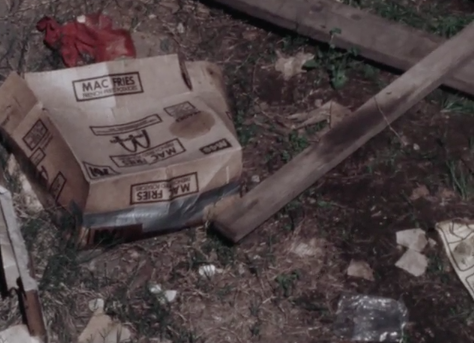

The discovery was made when a gate that was normally kept locked was found to be unlocked and left ajar. There in a box lay Ferreira’s remains—stabbed, slashed, shot and beheaded. Also in the box were the child’s clothes and Danny Meredith’s car keys. According to prosecutors, the body had been decomposing there since before Chase’s arrest. Common sense and the circumstances of its discovery suggest otherwise.
When Chase’s trial began on January 2, 1979, Richard stood before the court looking very much like a concentration camp inmate. Already a thin man, the 5’ 11” Chase’s weight had dropped to a nearly skeletal 107 pounds.

He sat emotionless at the defense table, his mind seemingly miles away. As recounted by Lt. Ray Biondi, who headed the investigation and co-authored a self-congratulatory book on the case, the most “damning” pieces of evidence presented in support of the state’s case were two items that Chase allegedly had in his possession at the time of his arrest: a .22 caliber handgun and Danny Meredith’s wallet. The .22 though could not be matched to any of the slugs recovered from the victims, and the possibility certainly exists that the wallet was planted, or was acquired by Chase after the murders.
As it turned out, the strongest card in the state’s hand was Chase himself, who took the stand in his own defense, just as Herb had done. Despite having entered pleas of “not guilty” and “not guilty by reason of insanity,” Chase proceeded to give a long and rambling confession on the stand, during which he “freely and accurately used psychiatric and legal jargon,” according to Biondi. What he could not do, however, was accurately recall many of the details of the crimes.
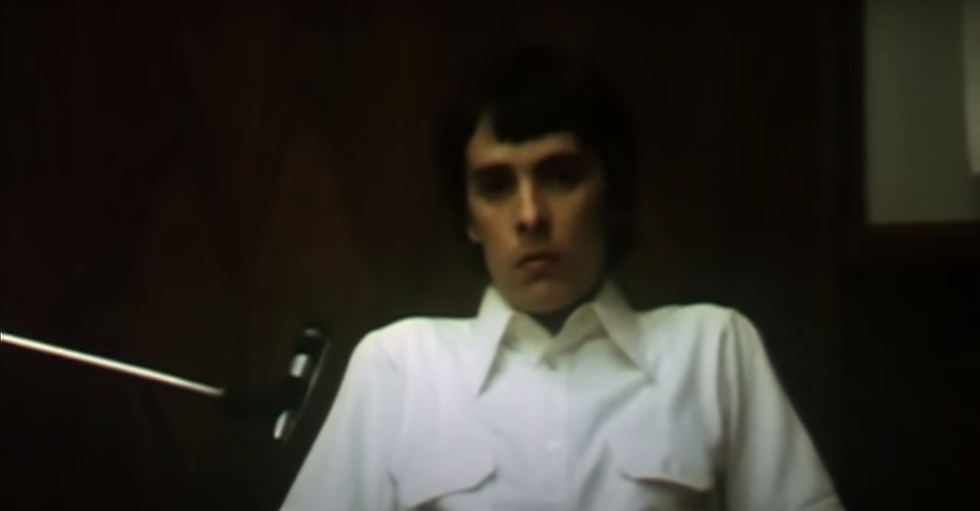
Chase’s defense counsel greatly aided the prosecution’s efforts by asking the jury to return second-degree murder convictions against his client. Echoing the immortal words of James Jackson, he stated: “I just feel that to tell you that there is something less than murder here is not a reasonable way to argue to you.”
On May 8, 1979, after just five hours of deliberations, the jury returned with six first- degree murder convictions. Six days later, after just 65 minutes of deliberations, they found the defendant sane. Four more hours of deliberations produced death sentences, after Chase once again took the stand during the penalty phase of the trial. Richard Chase never made his appointment with the executioner.
On December 26, 1980, he was found dead in his cell from the toxic ingestion of an enormous quantity of anti-psychotic drugs. His death was ruled a suicide. He allegedly had hoarded his daily medicine until he accumulated a lethal dose. His daily medication packet for that day, however, was found untouched.
Not long before his premature death, Chase spent four months incarcerated at—where else?—Vacaville.
(Chase also granted a series of interviews with FBI profiler Robert Ressler, during which he spoke of his fears of Nazis and UFOs, claiming that altough he had killed, it was not his fault; he had been forced to kill to kill to keep himself alive, which he believed any person would do. He asked Ressler to give him access to a radar gun, with which he could apprehend the Nazi UFOs, so that the Nazis could stand trial for the murders. He also handed Ressler a large amount of macaroni and cheese which he had been hoarding in his pants pockets, believing that the prison officials were in league with the Nazis and attempting to kill him)









FBI Records: The Vault:
https://vault.fbi.gov/richard-chase/richard-chase-part-01/view
Richard Chase Arrest and Trial Reels 1 - 5
https://archive.org/details/casacsh_000596
"One such cult that was active in the area, strangely enough, was the Manson Family, who had relocated to the area to be near their leader’s new home in a California prison cell. Indeed, the Family’s Lynette “Squeaky” Fromme had been arrested just two years before, in 1975, in the city’s Capital Park following a failed assassination attempt on then-President Gerald Ford."
https://www.latimes.com/archives/la-xpm-1985-03-02-me-23983-story.html
"A federal judge in Sacramento sentenced Good, 41, to 15 years in prison in 1976 after she was convicted of conspiring to send death threats to 171 business leaders she described as “corporate polluters.” "
Other Manson family members in Sacramento (not in jail):
-Ruth Ann Moorehouse (connection to Minot, North Dakota)
-Catherine ''Gypsy'' Share and her husband Kenneth Como (Aryan Brotherhood connection)